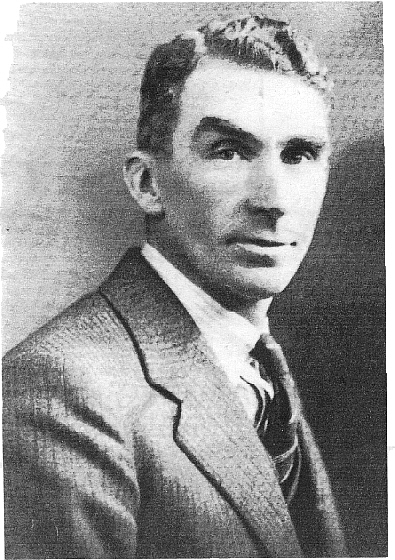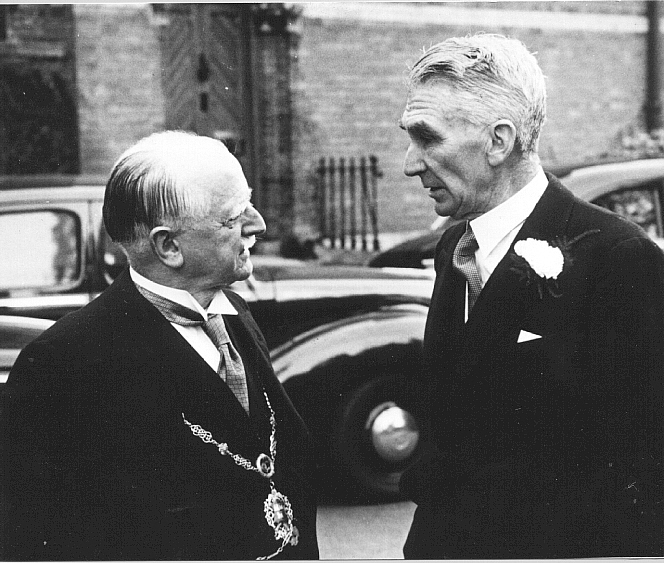Keane of Kilnamona
Also:- Director of the
(Irish) Racing Board; Director of the Radiography Service On Gerald J. Sherlock's retirement in 1936, Keane was appointed acting City Manager and Town Clerk of Dublin, the first appointment of its kind, pending a permanent appointment. Keane had been the officer responsible for advising Sherlock on staff matters in the Corporation and was financial advisor to the City Manager and the City Council. On taking up the post of acting City Manager, he foresaw the need for the building of more houses for the working classes and the advancement of the Poulaphouca Waterworks Scheme. Keane was particularly interested in the Corporation housing schemes and wanted at all costs to move people out of unsanitary conditions into a clean, healthy environment. A dispute arose in May 1937 between the Corporation and the Local Appointments Commission. The latter had set up a board to appoint a new City Manager and had approved the appointment of R. J. Hernon. However, members of the City Council recommended the appointment of Keane, his striking ability as an administrator and the efficient manner in which he had conducted the affairs as acting City Manager, being referred to by many members of the Council. The episode dragged on for four months, after which time, Hernon was eventually appointed to the managership. Following the impasse, Keane returned in November, 1937 to his former position as chief officer in charge of the Finance Department. Keane took over the duties of T.C. O'Mahony as
Assistant City and County Manager when the latter was appointed Director of
Housing in 1948. Keane had at this time, charge of Dun Laoghaire Corporation,
Grangegorman Mental Hospital Board, Balbriggan Town Commissioners and
Deansgrange Burial Board. Under his new appointment as Director of Health, he
still retained charge of the Grangegorman Mental Hospital Board.
John P Keane (right), Dublin City Manager, with the then colourful Lord Mayor of Dublin, Alderman Alfie Byrne during 1940's/50s.
From punter to Chairman of
the Racing Board In the same month, Keane and his wife accompanied the Lord Mayor, Robert Briscoe for a three week visit to the United States and Canada. This trip was a move on the Lord Mayor's part to attract American industrialists to Ireland. While there, Keane met up with Oliver St. John Gogarty, with whom he had come into contact some forty years earlier - Gogarty had in fact operated on Keane's sinuses! Keane wittily concluded that he hoped Gogarty's technique had quickly improved thereafter! During the American visit, Keane was applauded for his dry wit and his oratorical skills. He made a special visit to Westfield, situated on Lake Erie in New York State, in order to get some ideas for the construction of a new city hall in Dublin. He was especially interested in the Williamsburg architecture of Westfield's city hall, and was briefed on the mayor-council form of government there. In the United States, the mayor, usually an executive officer, carried on similar duties to those of the Dublin City Manager. J.P. Keane retired just six months short of half a century as an administrative official of the city of Dublin. In looking back over his years in the post of City and County Manager, he noted that from 1922, the Corporation had raised £54m through joint stock issues and mortgage loans. The most important development however during his time in the Corporation had been in relation to housing. In addition, the Corporation's association with the ESB in the finalising of the hydro-electric scheme at Poulaphouca further enhanced the city's municipal water supply. The city's five public libraries had increased threefold, as had the expenditure on the health services which now amounted to £3m, half of which was defrayed by the State. In Keane's forty nine years with Dublin Corporation, he had been "an outstanding official" and had the "highest qualities of mind and integrity". In 1950, he was a founding member and chairman for the first five years of the municipal mass radiography association, and a member of the committee of the National Association for Rehabilitation. He relinquished office as City and County Manager on 18 October 1958 and T. C. O'Mahony took up the post. Keane carried on an active life well into retirement - he was director of the National Stud at Tully, Co. Kildare and chairman of the Irish Racing Board in 1962. He was also president of the Civics Institute of Ireland in 1961. 1n 1962, Keane was one of a five-man commission set up to investigate the CIE (Rail and Bus Transport Co.) pension scheme and sickness benefits; their first meeting was held in June 1963 in the offices of the Department of Industry and Commerce in Dublin. To complement his workload, Keane remained an enthusiastic golfer and a regular theatre-goer. John P. Keane died on 13 January 1979 after an illness. Survived by his wife, four sons and one daughter, he is buried in Deansgrange Cemetery. *from 'Serving The City: The Dublin City Managers and Town Clerks 1230-1996'. Mary Clark and Gráinne Doran, Dublin Public Libraries. Information on John kindly supplied by Max Keane. Go now to linked page to obtain information on John's family returnupdated April 2014 |

